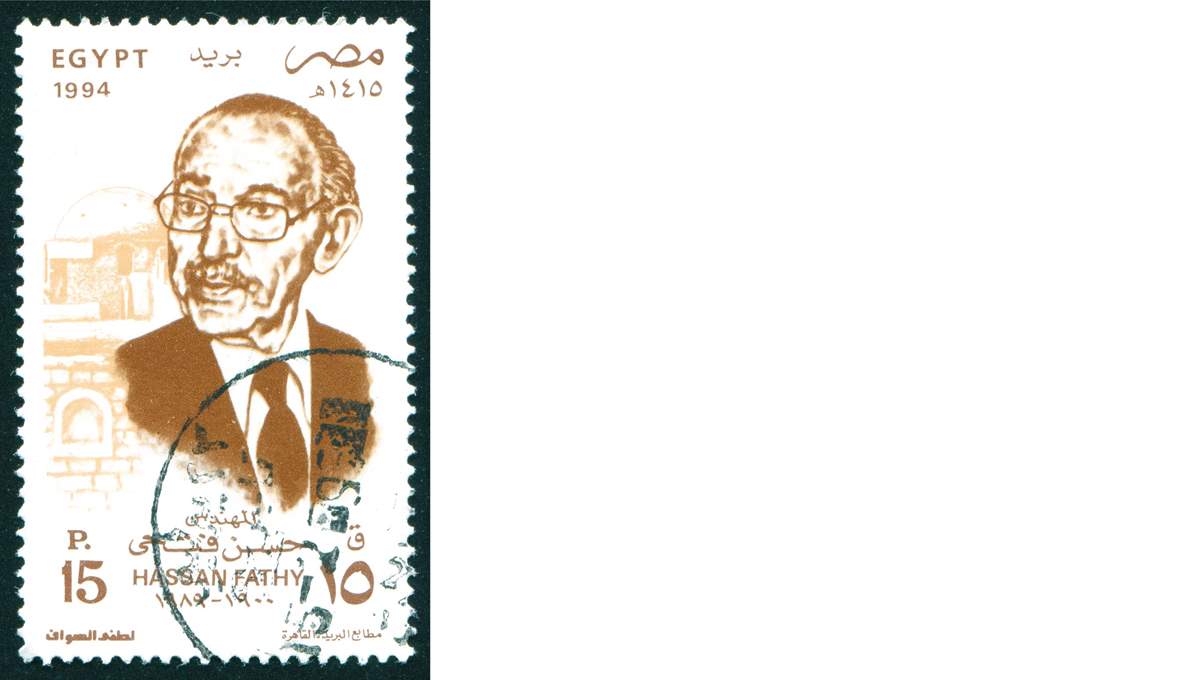AMMAN —
Hassan Fathy is among Egypt’s best known architects, and a man who devoted himself to building homes for the poor, earning the nickname “architect of the poor”.
اضافة اعلان
Born in 1900 in Alexandria to a wealthy family, Fathy grew up painting and drawing. In 1908, his family moved to Cairo, where he further developed his passion for drawing and ultimately attended the then “
King Fuad University”, now known as the ‘Cairo University.’ He graduated in 1926 with a degree in architecture.
Despite hailing from an affluent family and receiving Western-style training, Fathy embraced traditional, vernacular forms, techniques and materials, and promoted their use as part of a campaign to improve the living conditions of Egypt’s rural poor.
Fathy is among the architects who did not gain their fame through big structures and western modernism, but rather through designs that are both more recognizable to the average onlooker and more cost-efficient.
Early in his career, he was curious about the pre-industrial building systems of
Egypt. He strove to understand their aesthetic qualities, learn what they had to teach about climate control and economical construction techniques, and find ways to put them to contemporary use.
Fathy believed in creating indigenous environments by utilizing ancient methods of rural Egyptian areas, all at a minimal cost, to integrate his knowledge with the of the local experience in hopes of improving the living standards of those in rural areas.
From 1930 to 1946, he worked as a professor at Cairo University’s faculty of fine arts. In the beginnings of his academic career, he was enlisted to build a school in Talkha in Egypt.
In 1946, Egypt’s Antiquities Department hired Fathy to build the New Gourna Village ––one of his best-known housing projects.
Two decades after starting his project, Fathy published a book, Architecture for the poor, in which he explains his vision for the village, the theories behind the forms, his process, and his dealings with politics.
Relying on mud and adobe in the hot climate of a rural village in Egypt, Fathy’s design utilized natural ventilation and orientation, local materials, traditional construction methods, and energy saving techniques. He studied temperature, the travel of light and wind patterns. He included an open-air theater, a school, a market, and a mosque. He also built himself a house in the village.
Fathy’s architectural approach was inspired by Mamluk and Ottoman architecture in old Cairo, which is known for its climate efficiency, green buildings and natural cooling systems.
In 1949, he was appointed director of the Educational Buildings Department at the Egyptian Ministry of Education. In 1953, he became dean of the architecture department’ at Cairo University’s Faculty of Fine Arts. During this time, he completed multiple projects including the Alexandria resthouse, the Muhammad Musa villa, the Harraniya weaving village’, and the ‘Fares School’.
In 1980, the International Balzan Prize foundation awarded Fathy the Balzan Prize for his outstanding achievements in the field of architecture. That same year, he was awarded the Right Livelihood Award, commonly known as an alternative Nobel Prize.
Fathy’s ideas have greatly influenced architects of the time and continue to be respected today. The architect and humanitarian passed away at 89 years old on November 30, 1989.
 A stamp printed by Egypt, shows Hassan Fathy, engineer, circa 1994.
A stamp printed by Egypt, shows Hassan Fathy, engineer, circa 1994.
Read more Property stories.



